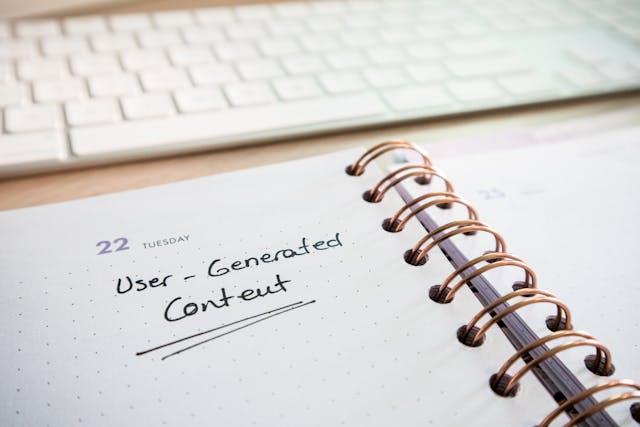How to Protect Your Art Online with Effective Watermarking Tips
Fortunately, an effective art watermarking tips can help protect your creations while keeping them visually appealing.
Honestly speaking, the internet offers incredible opportunities for artists to showcase their work, but it also comes with risks.
Unauthorized use and art theft have become common concerns, especially on platforms like Pinterest and Tumblr where attribution often gets lost.
Hence, a well-placed watermark serves as both a security measure and a branding tool. However, using it incorrectly can make your art look unprofessional or easy to edit.
That’s why I will teach you how to watermark your work effectively without compromising quality.
Why Using Effective Tips for Watermarking Your Art Matters
Many artists hesitate to use watermarks because they fear it will distract viewers.
However, protecting your intellectual property should always come first. Here’s why watermarking is essential:
1. Prevents Unauthorized Use: A watermark discourages people from using your art without permission.
2. Boosts Brand Recognition: A well-designed watermark increases visibility and credibility.
3. Maintains Your Professional Image: Watermarks make your work look polished and intentional.
4. Serves as Proof of Ownership: If disputes arise, a watermark can help establish your claim.
Learn how to legally register your art.
Now that we understand the importance of watermarking, let’s dive into practical and field-tested art watermarking tips to safeguard your artwork.
How to Create an Effective Watermark
A strong watermark should be visible enough to deter theft while still allowing viewers to appreciate your art. Follow these guidelines to strike the right balance:
1. Choose the Right Placement
Where you place your watermark can determine how effective it is. Consider these options:
Near the Center: Makes removal difficult without ruining the image. I personally lean toward this when sharing early concepts.
Over Key Details: Protects the most important parts of your artwork.
Along the Edges: Less intrusive but easier to crop out.
If you’re sharing your art for marketing, a subtle watermark near the center works best. If you’re selling digital copies, a larger, semi-transparent watermark across key details is ideal.
2. Keep the Design Simple Yet Recognizable
Your watermark should also be very easy to identify without overpowering your artwork. With that said, the best watermarks typically include:
Your Name or Brand: Builds recognition.
A Website or Social Media Handle: Directs people to your official page.
A Logo or Signature: Adds a personal touch.
Need help designing your watermark?
Try Canva’s free watermark templates.
Choose a clean, legible font. Avoid intricate designs that might distract from your artwork.
3. Adjust Opacity for Balance
Watermarks should protect your art without ruining its aesthetics. To achieve this:
High Opacity (70-100%): Best for preventing theft (e.g., stock images).
Medium Opacity (40-70%): Strikes a balance between security and aesthetics.
Low Opacity (20-40%): Ideal for subtle branding without overpowering the image.
Most artists prefer a semi-transparent watermark that blends with their artwork while remaining visible.
4. Resize Your Watermark for Different Platforms
Social media platforms require different image dimensions. Optimize your watermark based on where you’re sharing your art:
Instagram & Facebook: Small to medium watermarks in the lower-right or center.
Twitter (X) & Pinterest: Medium to large watermarks for better visibility.
DeviantArt & ArtStation: Larger watermarks since art theft is common.
A well-sized watermark ensures that it remains effective across all platforms.
Personally, I’ve found that images shared on Reddit benefit from watermarks placed near the center, especially in art critique subs.
5. Use Watermarking Software for Consistency
Adding watermarks manually can be time-consuming. Instead, use watermarking tools to streamline the process:
Canva: Simple watermark creation.
Adobe Photoshop: Professional watermarking features.
Watermarkly: Bulk watermarking tool.
iWatermark: Mobile-friendly watermarking app.
Using the right software ensures your watermarks are consistent and it also makes it appear professional.
Best Practices for Watermarking Without Compromising Quality
While watermarks offer protection, they should not take away from the appeal of your art. With that clearly stated, follow these best practices to maintain balance:
1. Avoid Overcrowding: A cluttered watermark can be distracting.
2. Use a Subtle Color Palette: Watermarks should blend well with the artwork.
3. Don’t Rely Solely on Watermarks: Combine them with other protective measures.
4. Test Different Placements: Experiment to see what works best for your style.
5. Regularly Update Your Watermark: Prevents easy removal by art thieves.
Surely, by following these effective art watermarking tips, you can protect your work while also maintaining its beauty.
Beyond Watermarks: Other Ways to Protect Your Art Online
While watermarks are useful, they should therefore be part of a broader strategy to safeguard your art, hence, consider these additional protective measures:
Register Your Copyrights: Legal registration provides solid ownership proof. Start your U.S. copyright registration here.
Use Reverse Image Search: Tools like Google Reverse Image Search and TinEye help track unauthorized usage.
Add Metadata: Embedded details in the file properties confirm ownership.
Upload Low-Resolution Versions: Prevents high-quality theft.
Build a Strong Online Presence: When your work is widely recognized, theft is easier to spot. Create portfolios on sites like Behance or Dribbble.
Combining these methods with watermarks gives you stronger protection against unauthorized use.
To sum things up, watermarking is one of the best ways to protect your digital art. However, it’s very essential to use it wisely to avoid compromising the viewing experience.
Additionally, a well-designed watermark should enhance security while maintaining the aesthetic appeal of your work.
Moreover, by applying these effective art watermarking tips, you can confidently share your creations online, knowing they are protected.
So, don’t let the fear of art theft hold you back; instead, take the necessary steps to safeguard your work today.
READ ALSO
Social Media Policy: Tips for Artists and Creative Professionals
Overcome Writer’s Block with Tips: Strategies That Work
Building Resilience as an Entertainer: Tips and Insights
Financial Planning Tips for Artists



